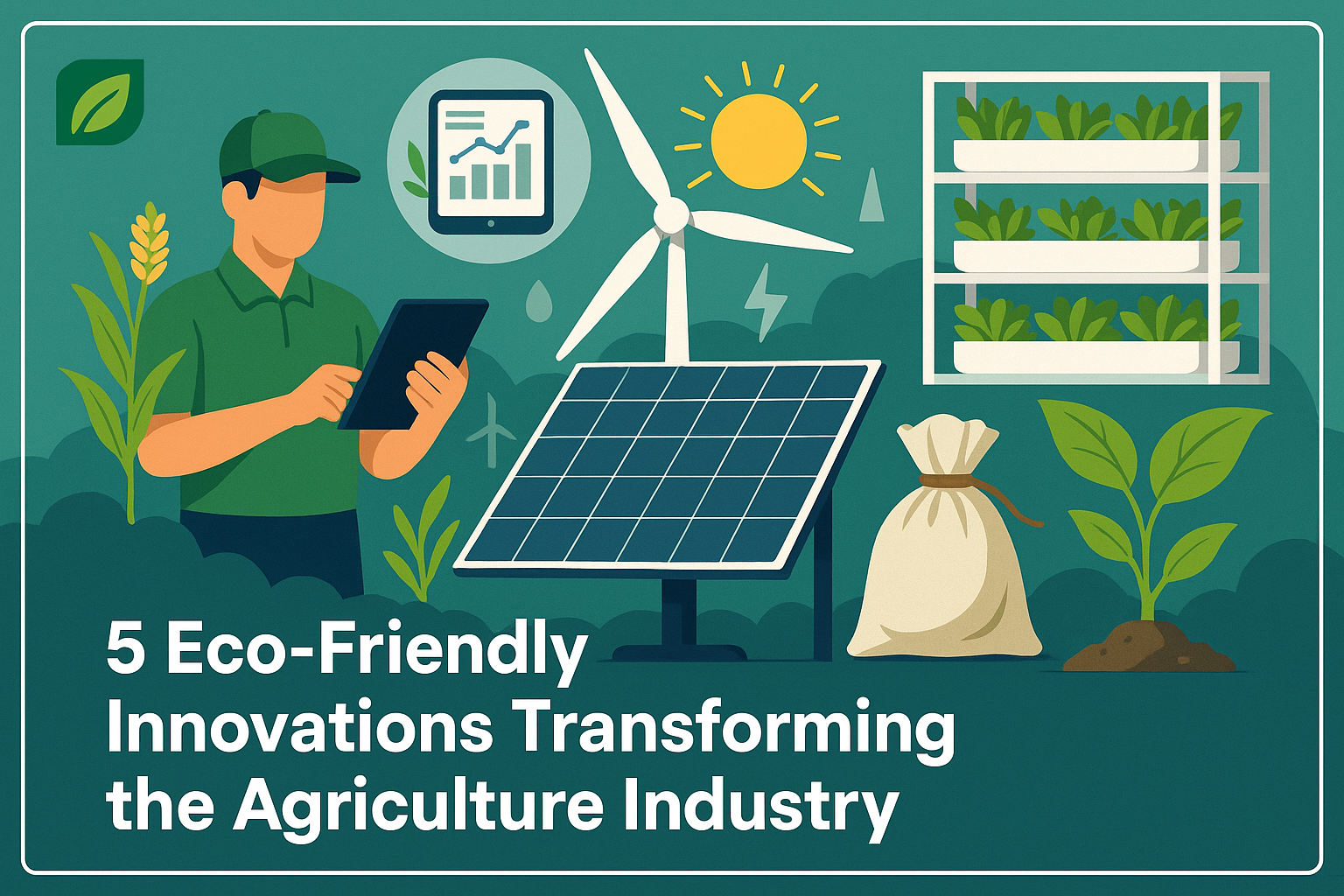
5 Eco-Friendly Innovations Transforming the Agriculture Industry
Posted on November 20, 2025
Agriculture is still at the core of human existence; however, traditional farming methods usually strain natural resources to a great extent. The climate crisis, coupled with rising global population and hunger, has made the shift toward sustainable agriculture extremely urgent. On the other hand, modern innovations are changing the scenario in the agriculture sector by providing ways that not only increase productivity but also lessen the impact on the environment.
Below are five green technologies that are paving a new way for the agriculture industry.
1. Precision Farming and Smart Agriculture
Among the most significant technological innovations in digital farming, precision agriculture is the one that has opened the forefront. Drones, GPS mapping, IoT sensors, and AI are all used by farmers to monitor closely the different parameters of the crop, such as soil conditions, moisture levels, health, and nutrients.
The technique, based on data, solely eliminates wastes, saves water, and reduces fertiliser and pesticide usage substantially at the same time. Instead of spreading the inputs all over their crops, the farmers concentrate only on the areas needing input. Moreover, the diseases and nutrient deficiencies can be identified early by the drones equipped with high-tech imaging systems, which allows taking prompt and precise actions.
This leads to the triple win scenario of better crop yields, less damage to the environment, besides being resource efficient. Precision farming is not only a sustainability enhancer but a profitability booster as well; thus, these technologies are a smart long-term investment for farmers.
2. Regenerative Agriculture Practices
The soil being the main focus of regenerative agriculture, the process includes biodiversity restoration and strengthening the land’s resilience. Crop rotation, cover cropping, no-till farming, composting, etc., are the practices that help build up soil organic matter and decrease carbon emissions.
Soil that has good health can trap carbon in a natural way, and so it can absorb CO₂ from the air and keep it underground—making regenerative agriculture a technique that is mighty in the global struggle to stop climate change. The farmers who apply such techniques not only see better soil fertility but also erosion reduction, water holding capacity increase, and bigger and healthier harvests. Besides the benefits to the environment, these methods are also responsible for the creation of food systems that are not easily broken down by climate disasters and are thus sustainable.
3. Vertical Farming and Controlled Environment Agriculture (CEA)
Vertical farming has become a trend, along with rapid urbanisation and diminishing farmland, as a sustainable and space-efficient practice. The vertical farms have controlled environments where crops grow in layered stacks using hydroponics, aeroponics, or aquaponics. The setup needs a lot less land and water compared to conventional farming, and it is not affected by the weather conditions at all.
When farming is done vertically, it means that production is guaranteed all year round, chemical pesticides are in less quantity, and if they are located in cities, transportation emissions are less. Vertical farms manage to demonstrate that technology is capable of not only providing consumers with fresh food but also preserving the natural resources, from leafy greens and herb specialty crops.
4. Renewable Energy Integration: Solar, Wind & Biogas
To carry out their agricultural operations, the farms need a lot of energy for irrigation, heating, and machinery. Using sustainable energy sources like solar power, solar pumps, wind turbines, and biogas systems integrated will allow the farms to rely less on non-renewable energy sources.
Irrigation powered by solar energy is one of the best options in isolated areas, and biogas plants change organic waste from farms into clean, usable energy. The mentioned practices not only lead to a decrease in the cost of farm operations but also lower gas emissions that are harmful to the environment to a great extent, thus eventually leading to a more eco-friendly and greener agro-technological setting.
5. Eco-Friendly Biodegradable Materials
Plastic pollution from mulch films, seed trays, and packaging has long been questioned in agriculture. Now, biodegradable and compostable alternatives are transforming the field. Biodegradable mulch regulates soil temperature, retains moisture, controls weeds, and naturally decomposes, eliminating disposal issues. Similarly, compostable trays and plant-based packaging support circular systems by turning waste into valuable resources.
The use of these materials will bring about the reduction of pollution, enhancement of soil, and development of more sustainable routes from farms to markets.
Conclusion:
The future of farming is not only defined by the reduction of the environmental impact but also by the enhancement of efficiency, resilience, and long-term productivity. The alignment of technological progress with the sustainability goals has made agriculture ready to transform into a more responsible and future-ready industry—thereby, permitting us to feed the whole world while protecting the planet.
